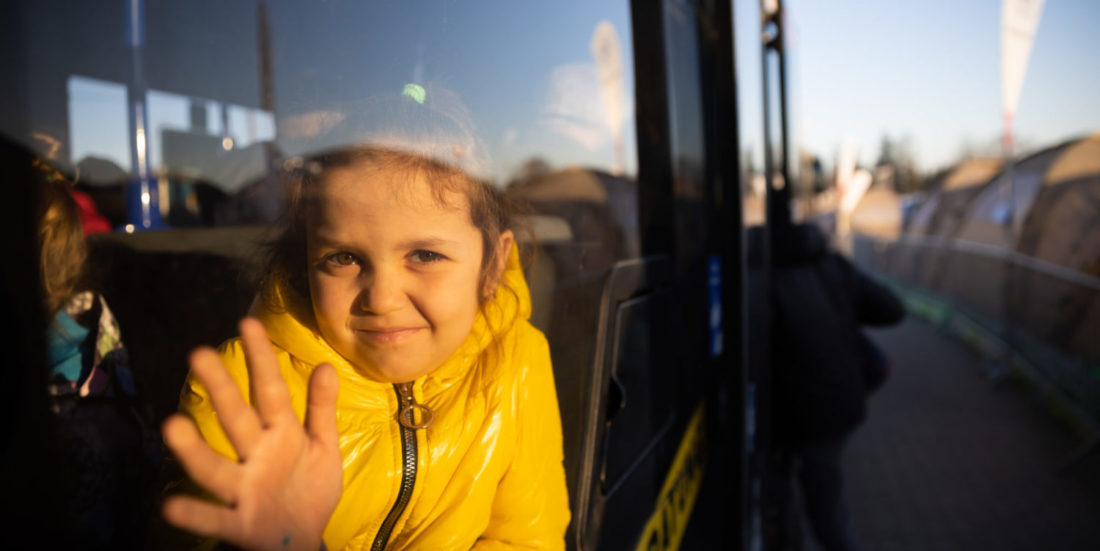The computing industry can assist Polish refugee centres
Speedy work carried out for free in Norway resulted in an IT system that protects refugees against human traffickers at the Polish-Ukrainian border. This type of aid work may become financially self-supporting.
Recently, Poland’s largest transit centre was about to run out of narrow, specially printed plastic armbands.
This might have been a trivial matter, if it weren’t for the fact that these armbands are precisely what distinguishes between real aid workers and people with criminal intent targeting vulnerable refugees.
What everybody at the transit centre on the Polish-Ukrainian border fears is that children or women may disappear and fall into the hands of human traffickers.
One way to prevent this is by issuing armbands printed with unique QR codes and visible alphanumeric codes to approved drivers and aid workers.
Asked for SINTEF’s help
Since the fourth day after Russia’s invasion of Ukraine, members of the Norwegian volunteer organisation Helpers.no have been present at the transit centre. Their mission is to assist local aid workers with IT support and back-office systems.
In other words, to provide support enabling first-line aid workers to concentrate on the refugees.
When the shortage of plastic armbands was discovered, the organisation sent an appeal for help home to SINTEF in Norway.

Terje Christensen and the organisation Helpers.no assist aid workers at one of Poland’s largest refugee centres. He recently expanded the aid apparatus by requesting – and receiving – the assistance of SINTEF Nord. He is seen here holding the ID armbands that SINTEF’s assistance provided. Photo: Private
Unusual technology project
This resulted in a small, unusual, technology project that SINTEF Nord paid for. They developed a printer software overnight, with the urgency of war an overriding factor.
Similar projects dedicated to IT goals will be needed in the acute phase following similar events elsewhere in the world.
However, this sort of aid is unlikely to acquire a big enough format if it is only based on compassion or begging letters to government agencies.
The IT industry can contribute
The Tesco centre is a transit reception ten kilometres from the Medyka border post. The centre is a disused supermarket which is currently providing Ukrainian refugees with a place to rest.
Five thousand people arrive here every day. They are registered and receive food and something to sleep on. They’re then transported to their next destination the following day.
During many weeks of physical presence here, Helpers.no have noticed that the reception centre has a number of problems that the IT industry can help with.
Business models needed
The need for emergency efforts of the type SINTEF contributed comes about because it may often take several weeks before the professional aid organisations are physically in place.
However, if this is to lead to something more than a few voluntary, free stunts, we need to find business models that make emergency IT aid projects financially sustainable.
One possible model is:
- Under any circumstances, Helpers.no will continue to offer “help to others” services when Ukraine is later to be rebuilt.
- Inspired by the motto of Virgin founder Richard Branson, that “doing good is good for business”, the organisation will inform the mayors of bombed-out regions that it has already contributed to taking care of Ukrainian women and children.
- At the same time, Helpers.no will name their co-operative partners. Appearing in this list may be valuable for operators wishing to contribute to the rebuilding process.
The urgency of war a deciding factor
One of SINTEF’s key areas of commitment is research into effective software development processes. However, the challenge presented by the request from Helpers.no was totally different from anything normally experienced in such projects.
Using the Cloud to program the plastic printer located at the Tesco centre was a simple enough task.
However, normal requirements like “let the customer test a beta version” had to take second place to “get it done ASAP”.
Queue of unsolved IT problems
The software code has already been handed over to Helpers.no, free of charge. Now the organisation wants to recruit “an army of developers and IT specialists”. They’ve also begun to specify other IT systems that the Tesco centre needs, including:
- An electronic application form for recruiting volunteers, with space for documentation. This would enable the elimination of unwanted or criminal applicants.
- An “order system” that specifies needs for donations from different donors as an alternative to general wish lists. This would cause more precise orders, avoiding donators to donate more products than needed.
- A logistics system giving a better overview of gifts arriving at and leaving the transit centre.
The aid apparatus that has assembled for the refugees in Poland consists almost entirely of voluntary, unpaid people, in both the first and second lines. This commands respect.
However, funding will be needed if technological assistance to the aid workers is to be provided on a larger scale. So although we are now searching for potential business models, we’re not benefiting from the misfortune of others.


